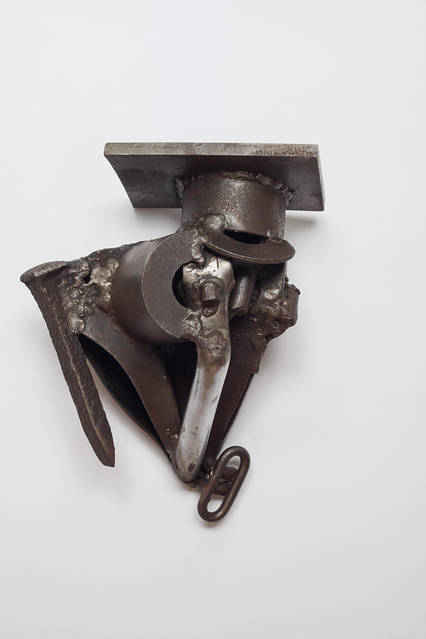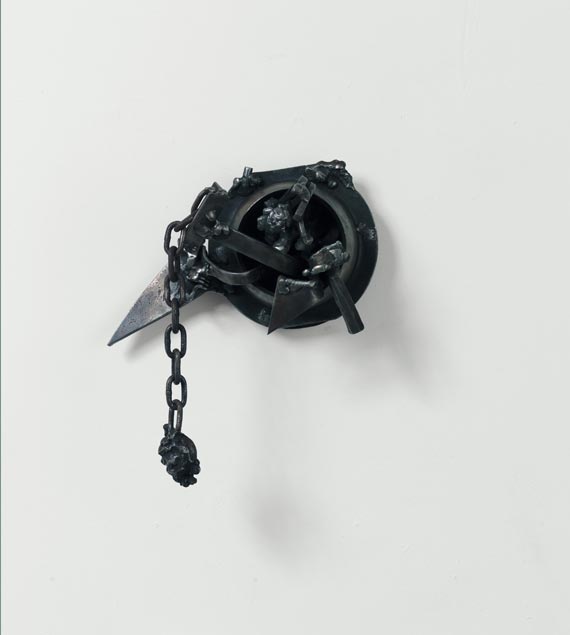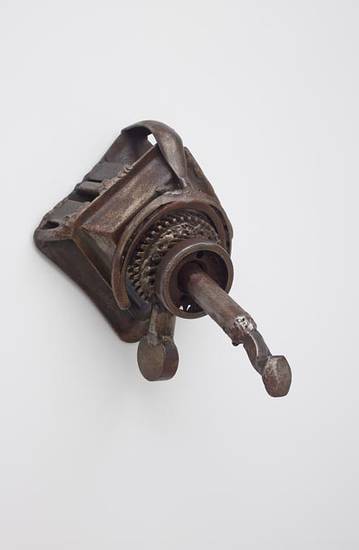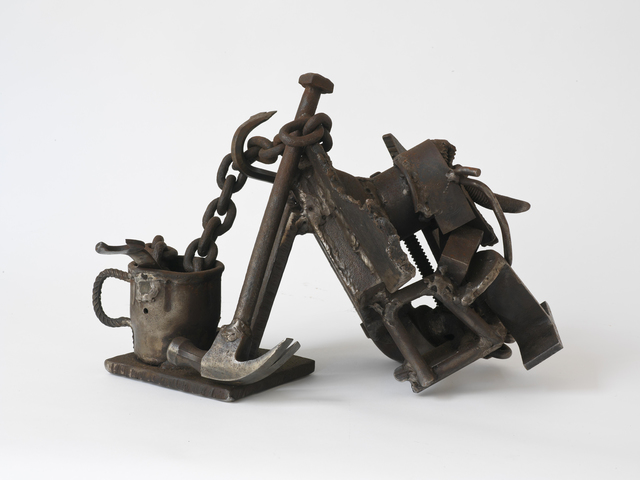
Melvin Edwards: Five Decades
Until Jan 10, 2016
Zimmerli Art Museum, Rutgers, New Jersey.
Voorhees Gallery
Dakar, 2004.
About:
Born in Houston, Texas, in 1937, the sculptor Melvin Edwards divides his time between his studio in Plainfield, New Jersey, and residences, with studios, in Accord, New York, and Dakar, Senegal. Edwards was the first African-American sculptor to have a solo show at the Whitney Museum of American Art in 1970. He was also professor of sculpture at Rutgers University from 1972 to 2002. In 1988, New York Times critic Michael Brenson lauded Edwards as “one of the best American sculptors… [and] one of the least known.” This exhibition is the first retrospective of the artist’s career in more than twenty years.
Melvin Edwards: Five Decades bears witness to Edwards’s profound commitment, from the very beginning of his career, to an art that is both abstract and deeply engaged with meaning and expression. A truly international artist well before the advent of today’s global art world, Edwards has brought his experiences of other cultures and languages, particularly those of Africa, into his work, to explore the varied ways that art can forge bonds of connection and kinship. He is best known for his Lynch Fragments, an ongoing series of small-scale reliefs begun in Los Angeles in the early 1960s and born out of the social and political turmoil of the civil rights movement. Incorporating tools and other familiar objects, such as chains, locks, and ax heads, Edwards’s Lynch Fragmentsare abstract yet evocative, summoning a range of artistic, cultural, and historical references.
Begin Again, 1979.
Some Bright Morning, 1963.
The exhibition includes a broad selection of Lynch Fragments, a series that continues through the 50 years of his work. While the early examples draw from American history (from civil rights to Vietnam), many of his laterLynch Fragments reflect his experiences of traveling in Africa and working with African metalsmiths and artists. Major large-scale sculptures of the 1960s, such as Chaino, The Lifted X, and August the Squared Fire, as well as his Rockers of the 1970s, which incorporate movement and, in some cases, sound are also included in the exhibition. With the artist’s cooperation, the Zimmerli recreates the groundbreaking 1970 exhibition of his barbed-wire sculptures originally shown at the Whitney Museum of American Art. In addition, several large sculptures have been restored for the exhibition, most notably the first Rocker, Homage to Coco, which was in the 1970 Whitney sculpture annual. Also on view are sculptures Edwards has made in Senegal over the past decade, as well as a selection of maquettes and prototypes reflecting his long career in public sculpture, and rarely exhibited works on paper, including sketchbooks and collaborations with the artist’s late wife, the celebrated poet and performer Jayne Cortez. The Zimmerli Art Museum and Rutgers University are proud to honor the achievement of one of our own during this celebratory year marking 250 years of history at Rutgers.
Melvin Edwards: Five Decades is organized by the Nasher Sculpture Center and its Associate Curator, Catherine Craft. The exhibition is made possible by the Henry Luce Foundation. Additional major support is provided by the National Endowment for the Arts.
Mamba, 1965.
The presentation at the Zimmerli is coordinated by Donna Gustafson, Curator of American Art and Mellon Director of Academic Programs. It is supported by the Estate of Ralph Voorhees and donors to the Zimmerli’s Major Exhibition Fund: James and Kathrin Bergin; Alvin and Joyce Glasgold; Charles and Caryl Sills; Voorhees Family Endowment; and the Jerome A. Yavitz Charitable Foundation, Inc.-Stephen Cypen, President. Additional support is provided by the Office of Institutional Diversity and Improvement at Rutgers.
Still Life, 1985-1991.
Related Program
Reception / Thursday, September 24, 5 to 7pm
Join us in celebrating the exhibition Melvin Edwards: Five Decades, including an opportunity to meet the artist, who returns to Rutgers, where he was a professor for 30 years.




